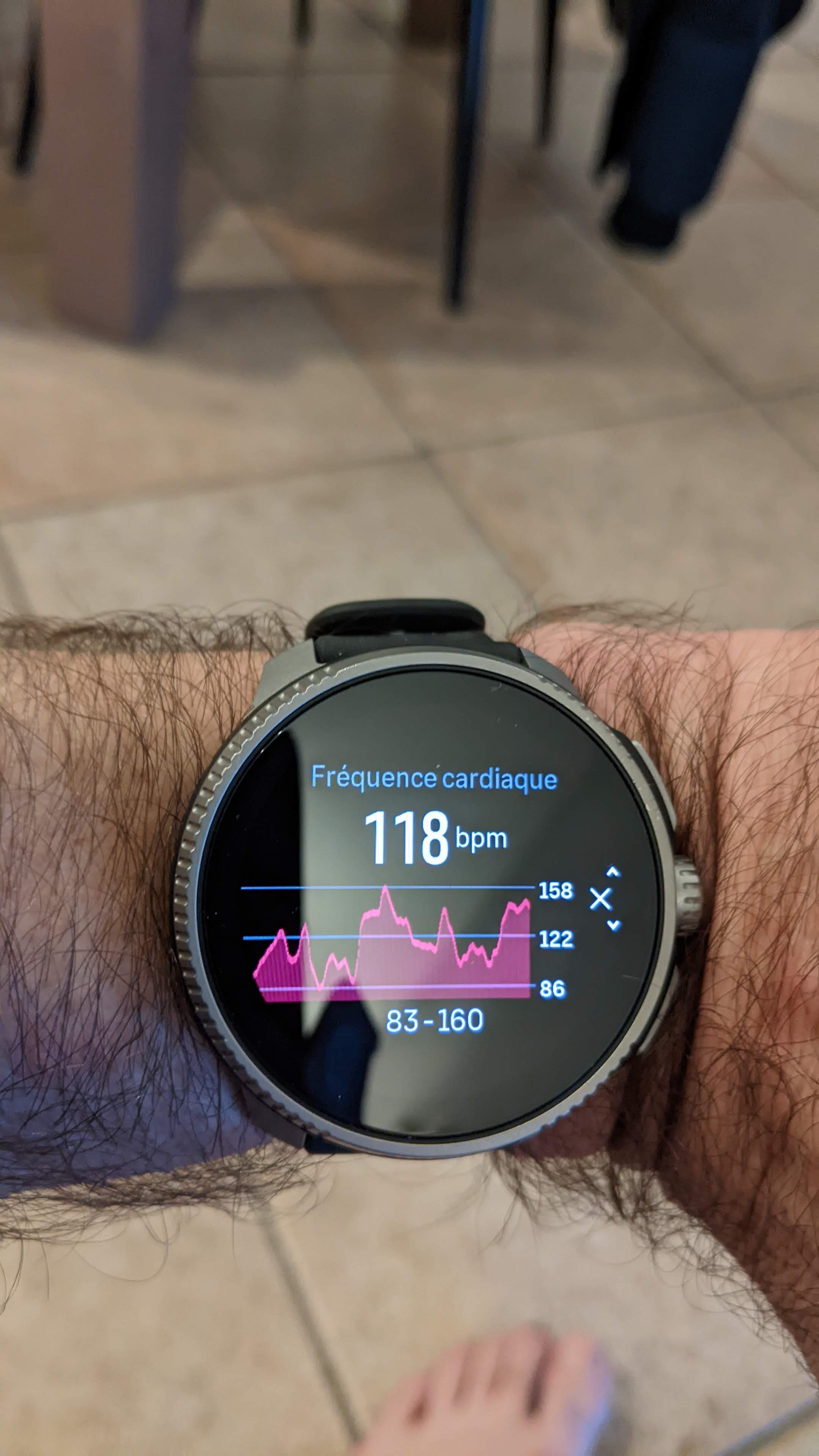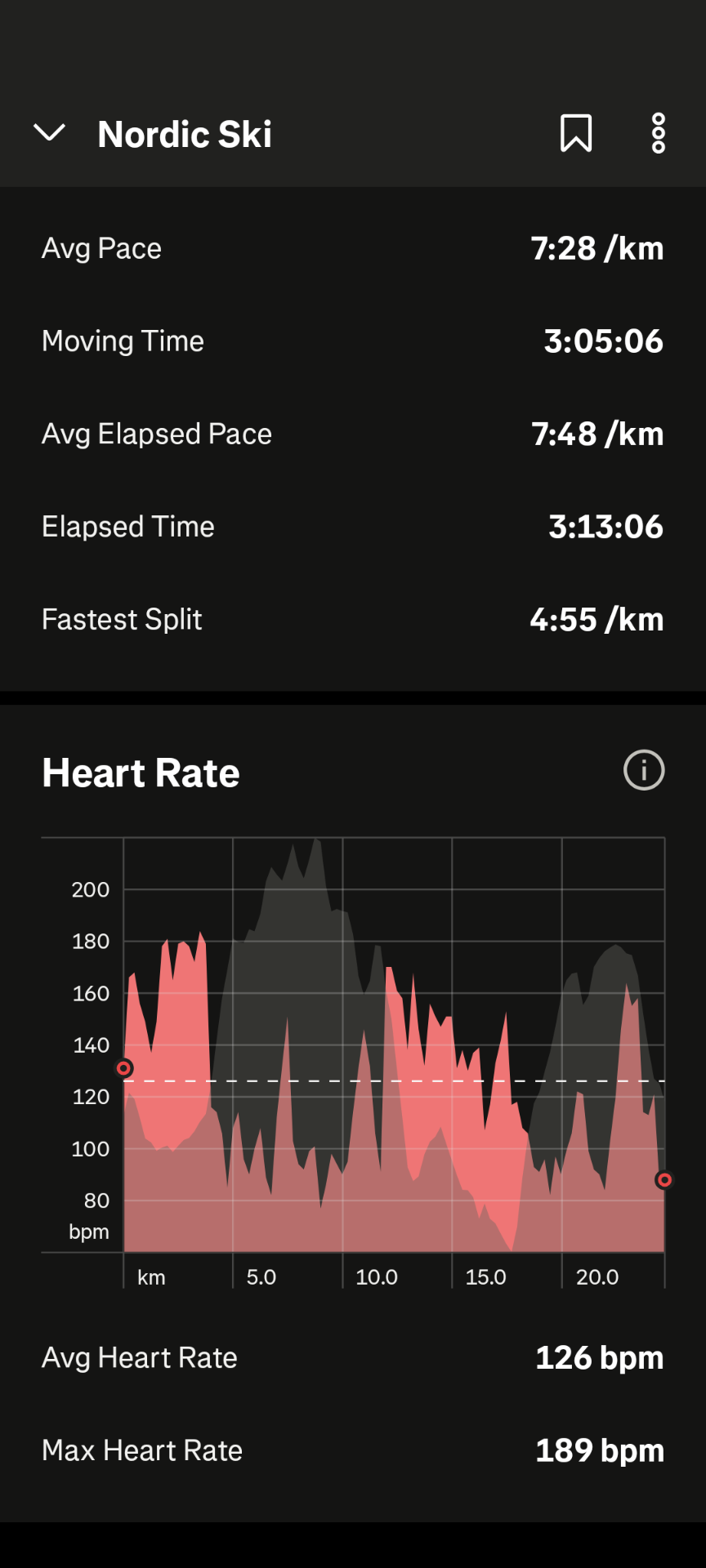HR sensor accuracy
-
I really understand your considerations, but do you have realized that 42 against 20 persons voted for “HR accuracy as an issue”?
-
@Fabio-Vaccaro it is now 42:22

I believe that neither the vote nor the whole forum is truly representative. It is a meeting point for critically interested people, which is great and really helpful, but most probably not the ‘reality’ nor the ‘majority’. Just my thoughts.
-
Has anybody heard that is there a difference in OHR accuracy between the stainless steel and titanium version, taking in consideration that the titanium version is lighter and maybe is not so prone to move?
I know this might be a bit bogues question since it’s very unlikely that anybody would have both versions of the watch. Field testers might have.Off topic, I had the pleasure of meeting the CEO & Board member of Suunto Oy by accident today at a local major electronics shop. I went there to see if they’d have the Race as a display watch, which they didn’t. So I was just glancing the sportswatch section and started playing with a Garmin watch when this one guy asked me that am I looking for sportswatch. I said that yes I am and then he asked that is Suunto out of the picture since I’m holding a Garmin watch. I replied that I came to see the Race but they don’t have it so then he introduced himself as a Suunto Oy’s CEO, took his Race from his wrist and let me play with the watch while we had a discussion about Suunto. Very nice and down to earth guy.
-
@Shrek3k ahaahhaahahah
I think you are right with the representativeness of this forum -
@JANTIKAINEN wonderfull and have you asked clarifications about HR issues to the CEO?

-
@David-l I think the wrist OHR should work for steady state running workouts at least. I think Garmin and Polar (VV2, Grit, not VV3) work better in this regard. Wearing a strap all the time in the summer months can lead to chaffing issues, and sometimes one is traveling and it’s one less thing to think about.
If you’re putting a OHR sensor on the watch, then the person buying it might reasonably expect it to work at least sometimes. The problem is that for many people it simply doesn’t work under anything but the most ideal conditions.
IMO, if they could fix the heart rate sensor, they’d be addressing a major shortcoming that would make them more competitive in this space.
-
@JANTIKAINEN said in HR sensor accuracy:
took his Race from his wrist and let me play with the watch
At that point he could have left it to you as a gift

-
@DrSilverthorn with the exception of one blip at the beginning of one run, it’s worked perfectly fine for me. HR for similar runs using Fenix are very close to this (can’t completely compare due to weather/alcohol intake the previous night).
-
ciao a tutti, qualche giorno fa ho provato a fare una comparativa fra garmin epix 2 pro e suunto race, il sensore hr di garmin era in linea con la fascia cardio facendo spinning… il suunto race era invece in grave difficolta’… poi sono un paio di giorni che mi alleno allacciando il suunto race sull’avambraccio e le cose sono sorprendentemente cambiate, in questa condizione riesce a tenere il passo con garmin… posso dirmi abbastanza soddisfatto
-
@carlopievani Not even after translation I could help me understand what changed the accuracy for you

-
@vjakub he change the placement of the watch to forearm and the accuracy becomes better,in line with Garmin epix 2
-
This might interest those who think OHR is accurate.
https://the5krunner.com/2023/11/29/garmin-fenix-6-hrv-vs-polar-h10-hrv-study-shows-the-winner/ -
@Brad_Olwin said in HR sensor accuracy:
This might interest those who think OHR is accurate.
https://the5krunner.com/2023/11/29/garmin-fenix-6-hrv-vs-polar-h10-hrv-study-shows-the-winner/Not really sure what this proves. We all know that chest straps are much more accurate that OHR. This is just some graphs an individual has put together. There’s no scientific input, no controls, and no peer review.
Different OHR sensors work differently for different people and are therefore usable only as a guide. Mine works great for me as a guide. I can certainly tell, without looking at my watch, if my HR is too high or isn’t high enough.
-
@David-l Thanks @Brad_Olwin , and I don’t agree with you at all @David-l .
This study does have the capacity to easily illustrate the difference between a competition medical device, a heart rate belt recognised as the best on the market (H10) and an optical reader, the Fenix 6.
It’s much more scientific than a ‘youtuber’ review like DC Rainmaker, which does interesting practical tests but with a scientific veneer that makes the non-scientist think it’s very scientific and which is in any case incapable of remaining impartial !
I don’t think the point of talking about this article is to excuse the inaccurate measurement of Suunto’s optical readers, or those of any other brand.
If the article can make those on this forum understand that if you want the most reliable measurement possible to be able to interpret all the Suunto indicators, you need the most reliable measurement and that therefore: sport = heart rate belt, that’s already great…And I think it’s time for brands to stop claiming too much about optical readers

Or maybe for Suunto to come out with a heart rate monitor that’s even more accurate than the Polar H10. -
@Arnaud-Lclr said in HR sensor accuracy:
@David-l Thanks @Brad_Olwin , and I don’t agree with you at all @David-l .
This study does have the capacity to easily illustrate the difference between a competition medical device, a heart rate belt recognised as the best on the market (H10) and an optical reader, the Fenix 6.
It’s much more scientific than a ‘youtuber’ review like DC Rainmaker, which does interesting practical tests but with a scientific veneer that makes the non-scientist think it’s very scientific and which is in any case incapable of remaining impartial !
I don’t think the point of talking about this article is to excuse the inaccurate measurement of Suunto’s optical readers, or those of any other brand.
If the article can make those on this forum understand that if you want the most reliable measurement possible to be able to interpret all the Suunto indicators, you need the most reliable measurement and that therefore: sport = heart rate belt, that’s already great…And I think it’s time for brands to stop claiming too much about optical readers

Or maybe for Suunto to come out with a heart rate monitor that’s even more accurate than the Polar H10.Absolutely agree with this point! Just use OHR as a guide

-
@Arnaud-Lclr I’m not sure anyone would consider the5krunner more reliable than someone like @dcrainmaker. Yes, the source of the graphs appears to be from a scientific paper, but there is no direct access to it and little to no context given. If you read the comments, it appears the5krunner didn’t even realize the results were taken while exercising. I think t5k went back and edited the (very short) article to clarify this. He/they even added that "we can’t infer the performance of RR recording at lower levels from thse [sic] results.”
I agree with @David-l that we’re all well aware that OHR, specifically at the wrist, is less reliable than an electrical chest monitor. No news here.
-
Hi guys,
Very interesting readings here. Helps a bit understand my “bad HR sensor” impression since wearing the Race (titanium).
Here are 2 photos taken from the same exercice (small fitness) wearing Race versus good old Suunto 5.
I think I’ll try moving the watch up + resetting and I’ll see.
HR sensor is not 100% a major issue for me but when you put a lot of money on a watch that is supposed to work (and be better than the previous one) you expect something better.


-
@duffman19 I can upload the manuscript if you wish. I have access.
-
Garmin with chest strap suunto on the wrist no major abnormalities.

 ️
️
-
Have my Suunto Peak Pro 9 since January 2024. Almost ever since the beginning, once every couple of workouts (very randomly) I have been experiencing horrible HR sensor accuracy. Let’s say I go for a run - I tend to have very high HR during cardio workouts, so my HR will usually be around 160 or more. Then, all of the sudden, my Suunto will start showing something completely false like 90 or 100. It makes the watch absolutely unreliable.
Below is my Strava screenshot from 25 km nordic skiing competition I participated in recently - it was very heavy workout for me, as you can see from the first couple of kilometeres… and then the HR sensor went down to 80 or 90. sn’t HR measurement one of most important things that a sport watch should do?
It happens repeatedly, randomly and makes the HR measurement, which is a really crucial feature for me, completely unreliable.
I have sent the watch to Suunto service - they said that they ran all the tests and everything works fine, so I should consider buying the Suunto chest strap (!!).
My boyfriend has a Garmin of comparable class and the HR works fine for him. I am extremely disappointed with both the product and the service - this is certainly not the quality I had expected from the brand Suunto. I am definitely not getting another Suunto watch ever again.
